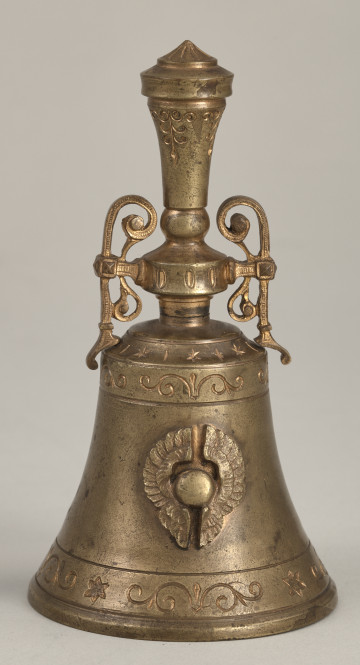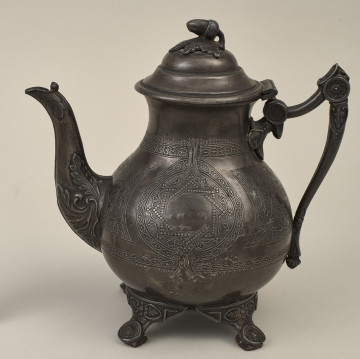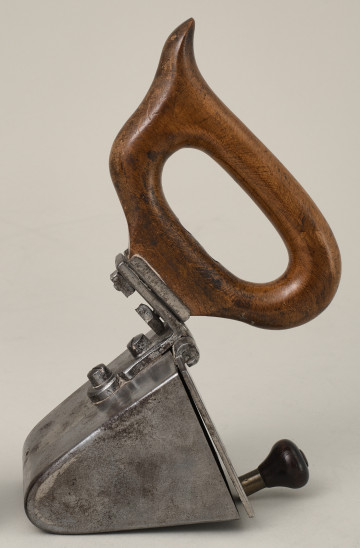
Bell
19th (?) century
Castle Museum in Łańcut
Part of the collection: Weapons, music instruments, varia
The history of humanity is inseparably tied to arms and weapons, which were used not only for hunting (collecting food), but also for defence and attacking. The time of emergence of weapons (for the purpose of this text, we shall call them offensive weapons, e. g. swords, spears) is accompanied the emergence of arms protecting either selected parts of the body, e. g. the upper body (the cuirass) or the head (helmet) or almost the entire body (plate armour). Until today, despite the development of weapons, defensive armour is still used, naturally, it is more advanced and makes use of the newest technical developments. Present-day bulletproof vests are the afterimage of historic breast plates or cuirasses, and today’s helmets are directly (save for materials, workmanship, decorations) are the descendants of armets, burgonets, lobster-tailed helmets or morions. The morion helmet is one of the types of Renaissance helmets originating from the mediaeval kettle hat. The morion helmet of Łańcut is a boat-type helmet, a characteristic trait of which is its tall crest, limited brim, low on the sides and raised, with a sharp end at the front and rear. The value of the helmet is increased by the fact that it was made of a single piece of iron, and the studs on it, depicting human heads (they survive only on one side of the helmet) are just a decoration, as well as the decorative crosses on the sides of the helmet body. Interesting is the fact that this particular piece was used in combat, as is indicated by the trace of an impact on one of the helmet sides. In general, these types of helmets were used by the infantry (pikemen, musketeers), very rarely by the cavalry (cuirassier units, in France – lancer infantry), and thanks to films and literature, the morion became a symbol of the conquistadores. In present times, boat-type morions are used by the Swiss Guard, and, beside pole weapons and colours, are their distinctive sign.
Author / creator
Dimensions
height: 30.5 cm, width: 25.5 cm
Object type
Weapons, instruments, varia
Technique
cast
Material
steel
Creation time / dating
Creation / finding place
Owner
Castle Museum in Łańcut
Identification number
Location / status

19th (?) century
Castle Museum in Łańcut

19th (?) century
Castle Museum in Łańcut

20th century
Castle Museum in Łańcut
DISCOVER this TOPIC
Museum of King Jan III's Palace at Wilanów
DISCOVER this PATH
Educational path